Pioneer-Burdekin pumped hydro scheme: What you need to know
The largest pumped hydro scheme in the world, proposed for 75km west of Mackay, promises more than 2000 jobs during construction. But locals have had more questions than answers. Until now.
The $12 billion-plus pumped hydro project which will dramatically change the hinterland west of Mackay is creating heated division across Queensland.
The Labor government’s pledge to build the “world’s biggest” pumped hydro scheme in the Pioneer Valley, about 70km west of Mackay, would store and dispatch half of the state’s energy needs with renewable energy by 2035.
If approved, it will become the centrepiece of Labor’s $62bn renewable energy strategy and end the “reliance” on coal in the state’s publicly-owned power plants by 2035.
About 50 homes would need to be destroyed to build the reservoirs and surrounding infrastructure for the Pioneer-Burdekin pumped hydro project with Deputy Premier Steven Miles promising homeowners “fair” compensation.
But as residents raise the alarm over alleged harm to platypus while teams drill into the earth during preliminary investigations, Queenslanders are pleading for more information before they can decide whether they will support or reject the legacy project.
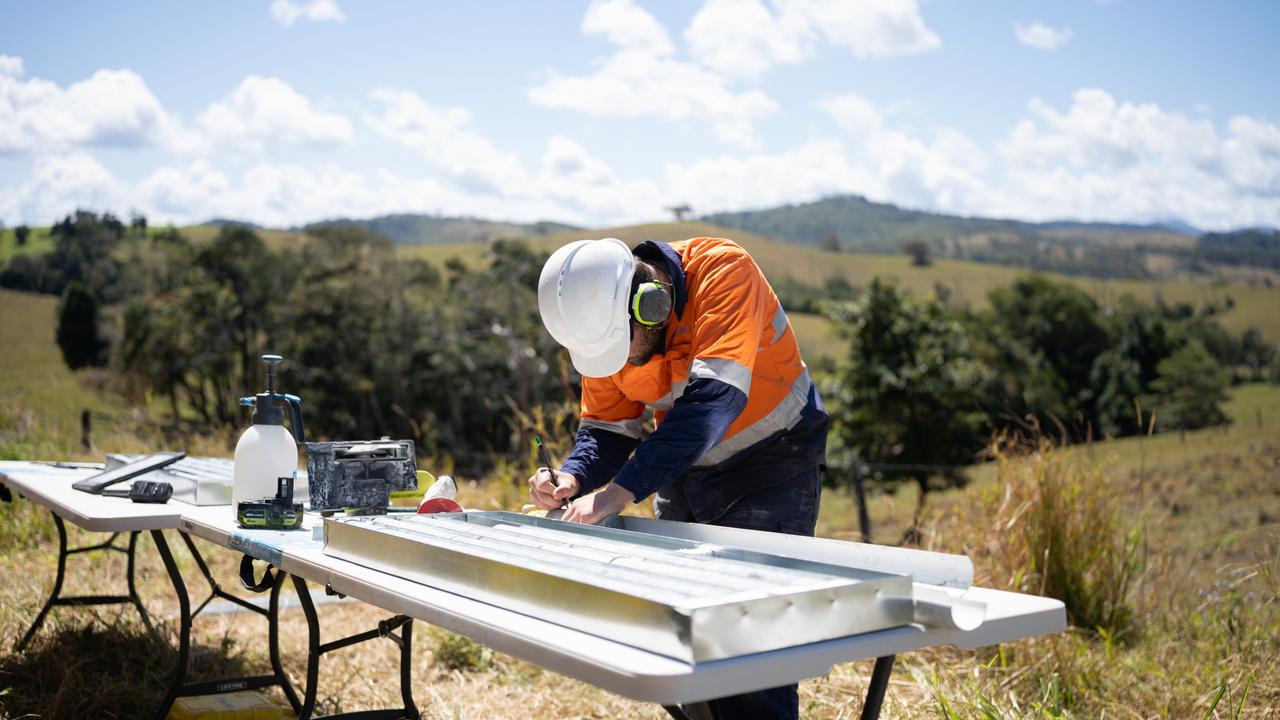
So we asked you, our readers, what questions you had about the scheme so we could get you answers.
We had anticipated 20 questions but were inundated with dozens.
Of those, we chose 50 questions and below are the answers from Queensland Hydro, the state government entity overseeing the PHES, as well as the Borumba hydro project west of the Sunshine Coast.

You can read the questions and Queensland Hydro’s responses in full below.
At a glimpse, we can reveal multiple landowners have already entered into acquisition negotiations and workers will be needed from overseas should the project proceed.

Queensland Hydro has acknowledged there is platypus habitat within the “footprint” of the proposed reservoirs and the proposed project’s power station will be 700m underground.
And the government says it will use the cost blowouts of the Snowy hydro scheme as hard-learned lessons to rope in the costs of PHES.
There was also a response as to why the project was announced from afar as a complete surprise to Netherdale landowners, the mayor, and the broader Mackay region community.
If you have a query that was not answered by the 50 responses, let us know by emailing mackay@news.com.au
You can also have your say by writing a letter to the editor by emailing heidi.petith@news.com.au
50 QUESTIONS ON THE PIONEER-BURDEKIN PUMPED HYDRO PROJECT ANSWERED
1. Will PHES rely on ‘cloud seeding’ like the Snowy hydro scheme and how will this impact the environment including flora, fauna and water quality?
Queensland Hydro does not intend to use cloud seeding or any other form of manufactured weather modification during the proposed Pioneer-Burdekin project.
2. Why did Labor announce this project from afar and not consult landowners and the Mackay region community, including the mayor, beforehand?
The pumped hydro project was announced by the Queensland Government in the context of the broader Queensland and Energy Jobs Plan.
Engagement with the local community commenced immediately after the project was announced, with the Premier travelling to Mackay and the Minister travelling to the Pioneer Valley within days of the announcement.

At the first meeting of the Stakeholder Reference Group for the project, Minister de Brenni addressed the role of the Queensland Government as decision maker for the project, and that Queensland Hydro had no role in decisions about how the project was announced.
3. There are concerns the reservoirs mixing water from two separate catchments present a biosecurity risk. How will outflow be treated before being released back into the Pioneer River and Burdekin River catchments?
As part of the current investigation phase, and a potential future environmental impact statement (EIS), we will undertake a range of water quality, hydrology and aquatic ecology studies. These studies will assess potential water quality and biosecurity risks, as well as identify measures that can be put in place to manage potential risks.
Depending on the outcomes of these studies there are a range of measures that could be incorporated, for example, implementing pest species control programs.
Potential biosecurity risks will also be considered when determining what options should be used for aquatic fauna passage associated with the lower dam wall.

4. Why did the government choose the Pioneer Valley for its hydro centrepiece considering other locations may not have required as much clearing of remnant rainforest or impact on national park waterways and waterfalls?
As with any significant infrastructure project, it is exceptionally challenging to identify a location that avoids all impacts.
On the proposed Pioneer-Burdekin project, Queensland Hydro is committed to working alongside communities and experts to best understand and manage potential environmental, social and community impacts.
The proposed Pioneer-Burdekin project offers world leading energy storage and generation capacity, while avoiding inundation of national parks and World Heritage areas.
These factors are unparalleled by other sites.

The proposed Pioneer-Burdekin project has been located to avoid surface impacts to Eungella National Park, noting that approximately 86 per cent of the land within the inundation footprint is currently used for agriculture or has previously been developed.
See the response to question 36 for further details.
5. How can the government ensure the Mackay region is protected from dam failure, given the impacts on the underground water table, the igneous geology of the range, and the region's history of monsoonal rains, earthquakes, and landslides, including most recently in the January floods?
Given the regulatory framework in place for designing and construction of regulated dams in Queensland, dam failure is unlikely.
If the proposed Pioneer-Burdekin project proceeds to construction, Queensland Hydro will work with Australian and international experts experienced in these types of projects to design and construct the scheme.
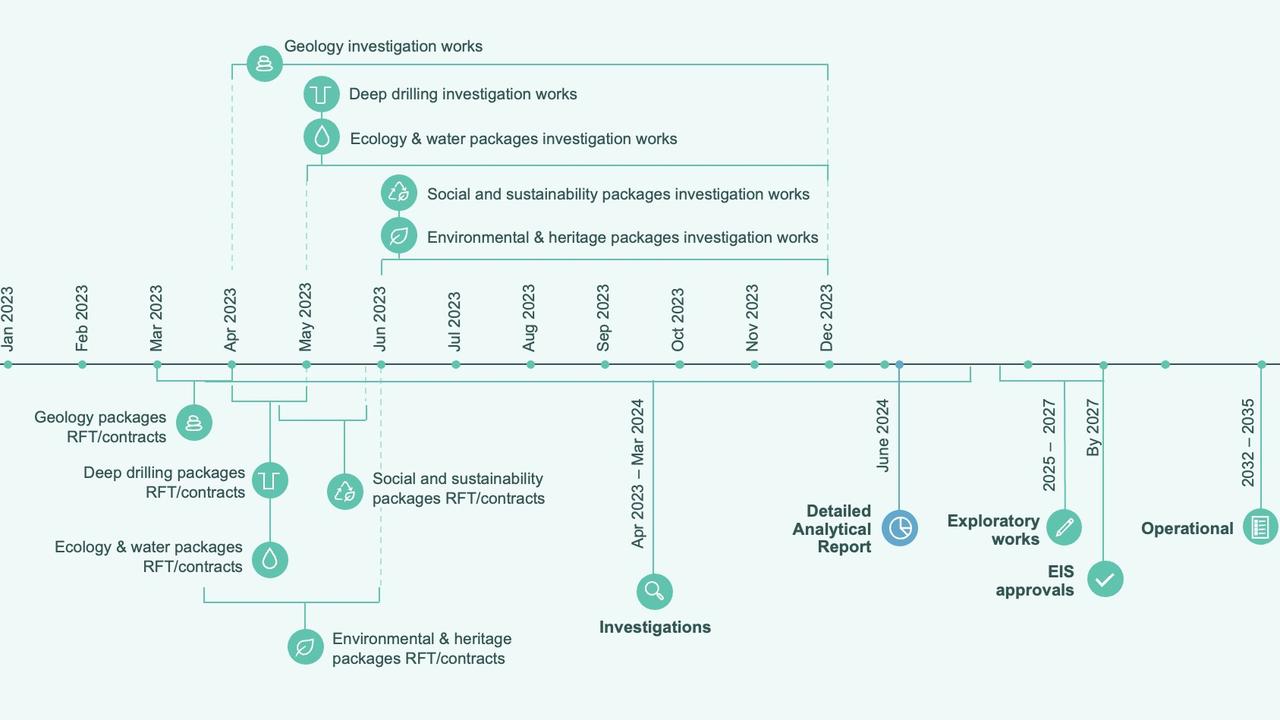
This will include comprehensive geotechnical investigations, hydrologic and hydraulic modelling, seismic assessments, and dam engineering.
This work will be subject to scrutiny by our Technical Review Panel to ensure the Project meets international best practice.
The dams will be designed to comply with applicable national and international standards. As required by Queensland Dam Safety Legislation, dam projects must be designed in accordance with strict design guidelines, such as Australian National Committee on Large Dams (ANCOLD) and International Committee on Large Dams (ICOLD).
The final design would also be subject to approval from the Queensland dam safety regulator.
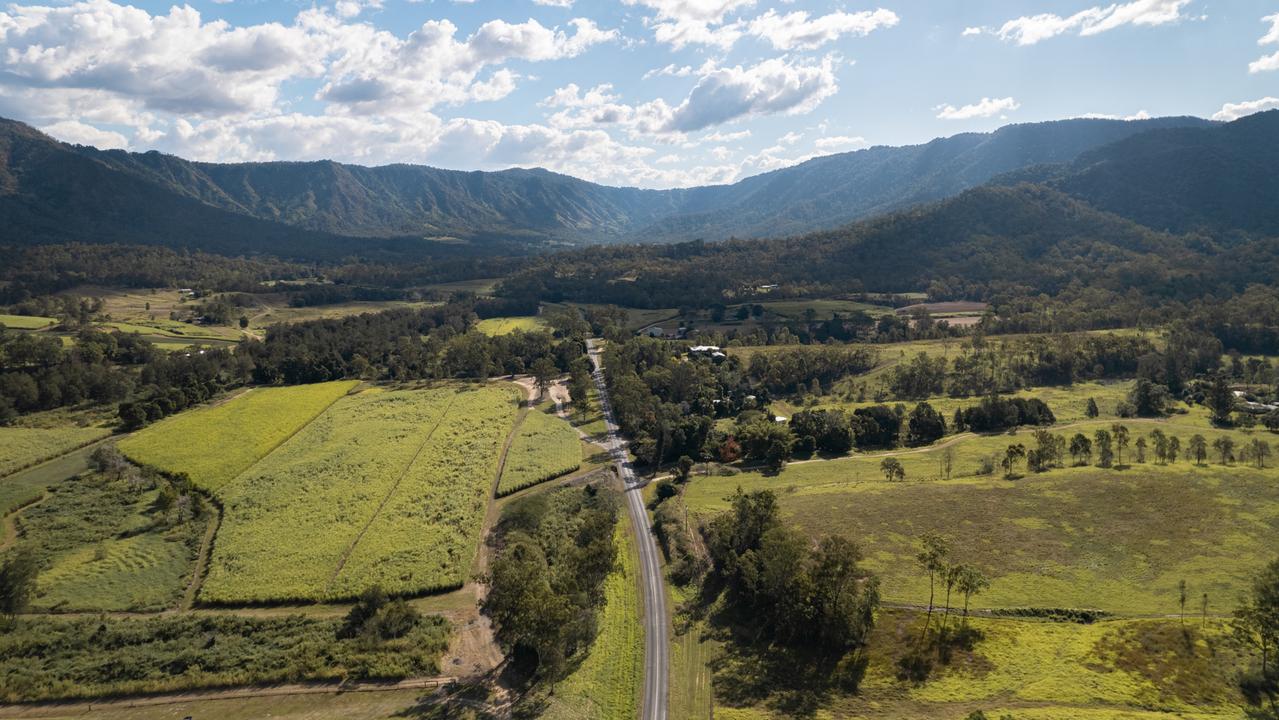
6. What modelling has been done to illustrate the impact should the dam walls fail?
If the proposed Pioneer-Burdekin project proceeds, failure impact assessments will be conducted at the appropriate design stages in accordance with Queensland guidelines and Australian National Committee on Large Dams (ANCOLD) guidelines.
See question 5 response for further details.
Australia is a world leader in dam safety with a very low rate of dam safety incidents and an even lower rate of dam failures.
7. Is it true the Labor government did studies in the 1990s that showed a dam wall at Netherdale would fail as the ground was unstable, and who will be liable should the PHES dam walls fail?
A study was conducted in the 1990s looking at creating a water supply dam in the Netherdale area, but the geotechnical information for this study was inferred from available data taken from Finch Hatton, not Netherdale.
At the time, the site was not selected because a superior water supply dam existed elsewhere.

Prior to commencing construction on this proposed project, we will be conducting a full failure impact assessment and full geotechnical investigation of the ground conditions for appropriate design and construction in accordance with Queensland Government guidelines.
In Queensland, the responsibility for the safety of a dam rests with the dam owner.
See response to Question 6 for more information on dam safety.
8. Has Qld Hydro referred the proposed project to the federal environment minister as required under Section 79 of the EPBC Act, as it is a controlled action for four separate protected matters, being: wetlands of international importance, listed threatened species and ecological communities, listed migratory species, and the Great Barrier Reef Marine Park?
The proposed Pioneer-Burdekin project is currently in the investigation phase.
If the project proceeds beyond the investigation phase, Queensland Hydro would submit controlled action referrals under the Environment Protection and Biodiversity Conservation Act 1999 for both the exploratory works as well as the main project works.
9. How will the issue of soil contamination in waterways be tackled, given the country will be scraped back to gather soil to build dam walls, and Netherdale was historically sugar cane country?
As part of the current investigation phase, and a potential future environmental impact statement (EIS), Queensland Hydro will conduct a contaminated site assessment which will consider the potential risks (including ecological and health risks) associated with potential man-made contamination within the project area.
This will include an assessment of potential risks associated with agricultural chemicals such as those used in sugar cane production.

These studies will also identify any necessary measures to mitigate these risks.
If the proposed Pioneer-Burdekin project proceeds, further development of the design, including further geotechnical and soil investigations, will be required to understand what – if any – excavation would be required within the reservoir areas.
10. Why is PHES considered an important renewable energy project towards a green future when it will impact the pristine Eungella rainforest which makes its own oxygen and microorganisms, supports flora and fauna, and supplies clean drinking water?
To decarbonise our energy grid, Queensland requires a significant amount of large-scale, long-duration energy storage to store solar and wind energy and make it available to consumers and industry at times when it is needed.
The proposed Pioneer-Burdekin site is a stand-out location for pumped hydro energy storage (PHES) because of the unique topography which provides substantial generation capacity within a relatively compact footprint.

To deliver equivalent storage capacity elsewhere in Queensland if the Pioneer-Burdekin project did not proceed, the footprint would need to be 2-3 times larger and across multiple locations, resulting in a potentially greater cumulative environmental impact.
The proposed reservoirs and tunnel portals for the Pioneer-Burdekin project are all located outside of Eungella National Park.
11. Is it true the PHES battery system will use more energy to pump up water than what is collectively used across Queensland each day?
Pumped hydro energy storage (PHES) is like a giant battery which stores power and releases it when needed.
Like all batteries, the amount of energy used to charge the battery (via pumping) is greater than the energy that can be taken from it (via generation).
The purpose of the proposed Pioneer-Burdekin PHES is to store large volumes of renewable energy by pumping water from the lower reservoir to the upper reservoirs.
As such, the proposed project could store almost the same amount of energy (120,000 MWh) as is collectively used across Queensland each day (about 150,000 MWh on average).
The PHES can then release this energy at times when Queensland needs it, which is important for a stable and reliable energy system.
Without this large-scale storage capability, large volumes of excess renewable energy would otherwise be lost.
12. Where will all the wind and solar farms, and massive 5KV transmission lines be built (as Powerlink could not say where), and where will existing power transmission lines be moved to?
The proposed Pioneer-Burdekin project will connect into the broader transmission network, drawing energy from renewables across Queensland. Solar and wind power stations do not need to be in immediate proximity to the pumped hydro scheme.
To further support renewable development in Queensland, in July 2023 the Queensland Government released a draft Renewable Energy Zone Roadmap (REZ Roadmap).
This Roadmap outlines the pathway for connecting 22 gigawatts (GW) of new wind and solar generation to meet our renewable targets of 50 per cent renewable by 2030, 70 per cent by 2032 and 80 per cent by 2035.

The Queensland Government, working with Powerlink, has identified 12 potential REZs across the Southern, Central, North and Far North Queensland regions.
Powerlink will play a role in co-ordinating how and when renewable energy projects connect to the transmission network within these zones.
More information on the REZ Roadmap can be found here: www.epw.qld.gov.au/about/initiatives/renewable-energy-zones/rez-roadmap
See responses to question 13 and 14 for information about the transmission lines.
13. How wide will the corridor need to be for transmission lines that will need to be built from Netherdale down to Brisbane, and which towns will be impacted by them?
Powerlink will commence their engagement with landholders and the community in April 2024 for the proposed Pioneer-Burdekin project.
Powerlink is set to deliver a new 500kV transmission network for Queensland to enable variable renewable generation and storage to reliably meet our future energy needs.
Further information is available from their website: www.powerlink.com.au/reports/delivering-new-500kv-transmission-network-queensland
As a first step, Powerlink will identify an investigation area, and over time based on a range of studies and comprehensive engagement, Powerlink will narrow that down to a single, final corridor.
The final width of the corridor is yet to be determined.
14. How many square metres of rainforest/fauna will need to be destroyed to build the powerlines for the PHES?
Powerlink have not yet commenced any detailed planning, studies or design work to connect the proposed Pioneer-Burdekin Pumped Hydro Project to the electricity network.
Powerlink’s focus will be on locating this infrastructure with the best balance of environmental, social and economic impacts.

The project’s planning approval processes will comprehensively examine a range of environmental factors, including impacts on endangered, vulnerable, rare and threatened flora and fauna species in the region.
See also the response to question 13.
15. Will there be compensation for tourism businesses that will die from this project taking 10 years to construct?
We will be undertaking extensive consultation and engagement with stakeholders, including tourism operators, to ensure that options to maintain (and even enhance) opportunities in the local area are incorporated in the design of the project wherever possible.

Queensland Hydro would consider grounds for compensation on a case-by-case basis.
Queensland Hydro understands that the Pioneer Valley and Eungella National Park are very important tourism areas for the local community and the wider region.
16. There are two new road diversions proposed around the lower reservoir at Netherdale – one for general traffic, one for construction traffic, merging back to the existing Eungella Range Rd. What will traffic look like on an already dangerous road when a large number of construction vehicles are forced to merge with locals’ vehicles, tourists’ vehicles, school buses, cattle trucks, and milk providers
The safety of the community is an absolute priority for Queensland Hydro.
The road diversions are being investigated as part of this commitment, to make the roads safe for all users, including community members and our project partners.
If the project proceeds, we will work with Mackay Regional Council, the Department of Transport and Main Roads and the local community to understand site access and any potential impacts the project may have on existing transport routes.

This will include assessing Eungella Range Rd.
Studies will consider traffic volumes, road capacity, road realignment and road surface requirements, as well as a range of social, environmental, and financial considerations related to traffic and transport.
The findings of these studies would inform the final design of any proposed modifications to the existing road.
17. How does construction machinery travel along Mackay Eungella Rd given the existing road infrastructure and multiple bridges are not rated for them?
Investigations will be undertaken as part of the current investigation phase of the proposed Pioneer-Burdekin project to assess the existing road network and determine whether infrastructure, including bridges, need to be upgraded to facilitate construction traffic.
18. What road upgrades will be required?
Studies in the current investigation phase will consider traffic volumes, road capacity, road realignment and road surface requirements, as well as a range of social, environmental, and financial considerations related to traffic and transport.
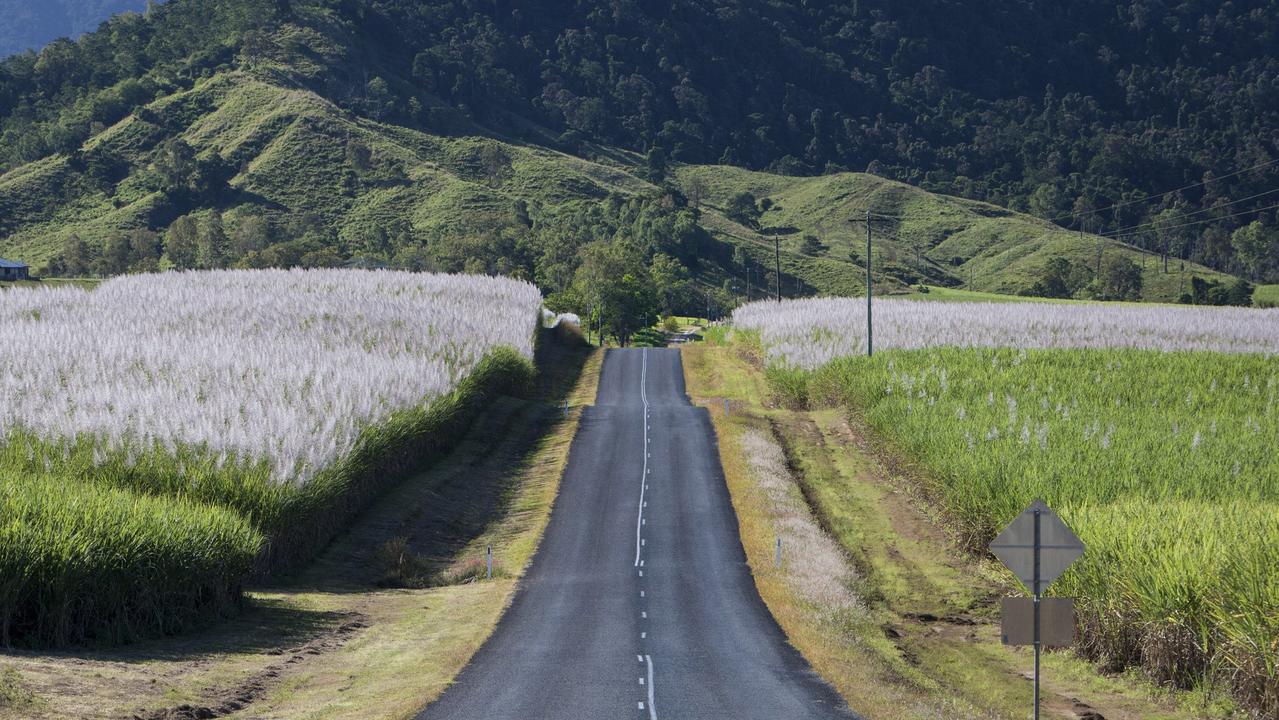
The findings of these studies would inform any proposed modifications to the existing roads.
See responses to question 16 and 17 for more about roads.
19. Given the cost of the Snowy hydro project, a much smaller project than PHES, has already blown out from $2bn to $12bn, what is the true cost of the PHES?
This detail is unavailable at this stage.
A core objective of the detailed analytical report for the proposed Pioneer-Burdekin project is to provide the Queensland Government with more information on the proposed project cost and schedule, factoring in engineering design and on the ground social and technical investigation information.
The proposed Pioneer-Burdekin project has the advantage of being able to learn from lessons from the Snowy Hydro project and incorporate them into the planning phase.
20. The Snowy hydro project was expected to be finished by 2021 but will now not be ready for three to five years. Using the same logic, why did the government decide 2035 was a feasible ETC date for PHES?
The project’s proposed construction time frame, outlined in the Queensland Energy and Jobs Plan (QEJP), is based on an initial analysis of the project parameters. The plan is available here: www.epw.qld.gov.au/__data/assets/pdf_file/0029/32987/queensland-energy-and-jobs-plan.pdf
A core objective of the detailed analytical report for the proposed Pioneer-Burdekin project is to provide the Queensland Government with more information on the schedule, including inputs from front-end engineering design, geotechnical and ecological data, and details of potential environmental impact of the project.
Read more: Why Qld Hydro projects won’t suffer same hitches as Snowy 2.0
21. Where is the 2000-strong worker’s camp going to be situated, with another massive environmental and community footprint?
The current phase of investigation works will consider potential locations for these facilities; however, the final locations and layouts would be determined during future phases. Queensland Hydro would seek input from a range of stakeholders including Mackay Regional Council as part of the site selection process.
Temporary worker accommodation facilities may be required for both the upper and lower reservoir sites to accommodate the workforce.
Should the project proceed to an environmental-impact statement (EIS), Queensland Hydro will be required to prepare a Social Impact Management Plan which will include a Workforce Housing and Accommodation Plan.
The environmental and social impacts of any temporary worker accommodation facilities would also need to be assessed as part of the EIS process.
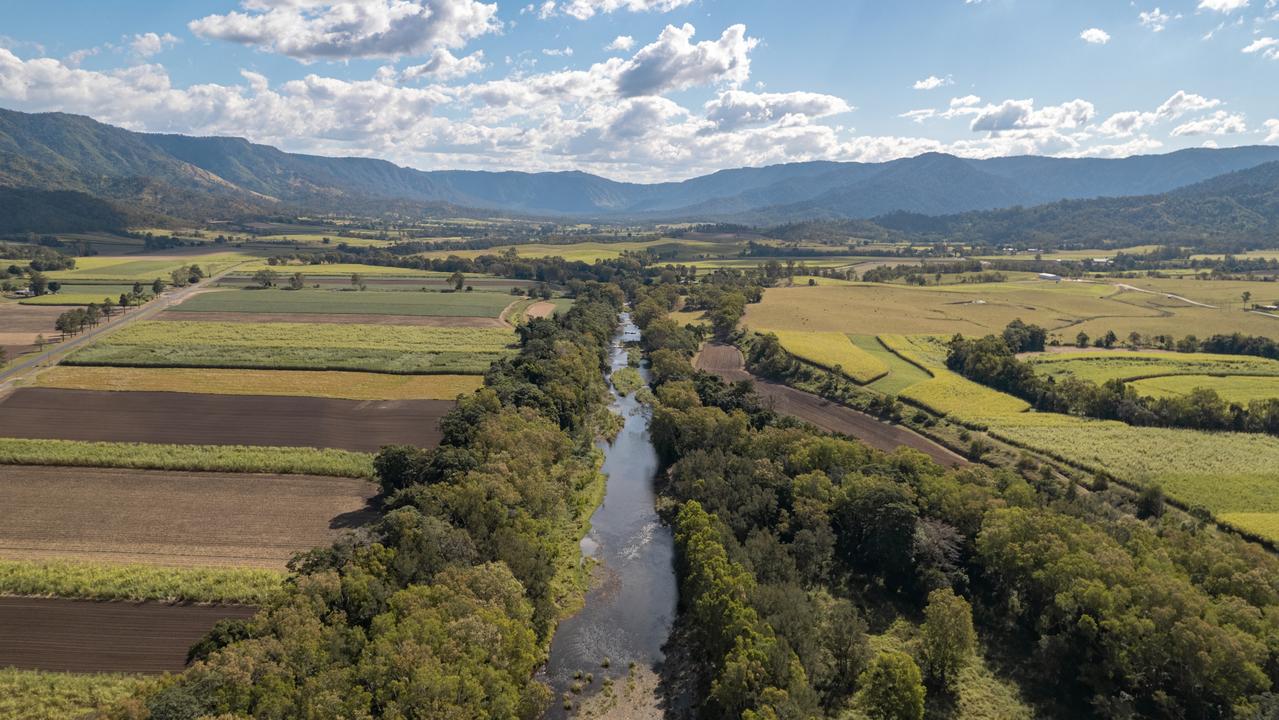
22. Where does the government intend to get the workforce from to build this monstrosity?
With more than 2000 workers likely to be required during construction, the project would need to tap into local, regional, state, national, and even international workforce to source the skills to deliver the proposed project.
Queensland Hydro would seek to maximise opportunities for current and future local workers. There are many workers in the Mackay region with transferable skills from the mining and construction sectors, presenting opportunities for training, retraining and upskilling workers in adjacent industries.
Queensland Hydro has started hiring the workforce to deliver the Borumba pumped hydro project, and we are already seeing that these unique, world class projects are highly attractive to workers.
23. How will cyclone and flood waters be handled, and ensure releases over spillways don’t erode Eungella watersheds and cause sedimentation in creeks, if there is no controlled overflow from the dam?
The dam would not increase flood risk.
The design of the dam spillway would consider a worst case probable maximum precipitation event, like a large tropical cyclone located exactly above the project catchment.

Floods that would cause the water level to rise would reach the dam spillway crest at full supply level, and flow naturally over the spillway downstream.
As part of the investigation phase, and a potential future environmental impact statement (EIS) process, Queensland Hydro will be undertaking studies into erosion and sediment transport processes within the catchment to better understand the potential impacts of the proposed project, and how these impacts could be managed.
24. What studies has the government done to determine whether endemic species like the Gastric Brooding Frog and Eungella Tinker Frog still exist in the region, and how it will protect these species when small waterways are being lost to the project?
Current investigation works will consider endemic species such as the Eungella Tinker Frog and the Eungella Honeyeater.
Proposed measures to avoid, mitigate or offset any potential impacts to native and endemic species in the area would be presented in detail in an environmental-impact statement (EIS) report, should the project progress to EIS phase.

It should be noted that the Northern Gastric Brooding Frog has not been sighted since 1985 and is presumed extinct under the Environmental Protection and Biodiversity Conservation Act 1999.
Multiple detailed surveys to locate the species have been undertaken without success since the last sighting.
We will be commissioning surveys for this species in accordance with relevant Commonwealth and State survey guidelines.
See the response to question 25 for further details on environmental studies.

25. Why hasn't there been more of a focus on the risk to the Eungella region’s endemic species when the Labor government was not shy to focus on the impact of the Bravus Carmichael mine on the black throated finch?
As part of the current investigation phase, and a potential future environmental impact statement (EIS), Queensland Hydro is commissioning a range of ecological investigations including field-based flora and fauna surveys of areas that may be affected by the project.

This work considers (but would not be limited to) species such as the Eungella Honeyeater, Eungella Dayfrog, Greater Glider and Northern Quoll.
We will work with ecological specialists to assess potential impacts to these species, and identify measures to avoid, mitigate or offset these potential impacts.
Read more: Eungella rainforest wonders ‘would met UNESCO standard’
26. How much travel time will be added when the Mackay-Eungella Road is diverted to travel around the proposed lower Reservoir at Netherdale?
This information is currently not available.
If the Pioneer-Burdekin project proceeds, we will be working with the Department of Transport and Main Roads and the local community to understand site access and any potential impacts the project may have on existing transport routes.

The findings of these studies would inform any proposed modifications to the existing road.
27. When will cost estimates and a business case be available for the public to see?
Public release of the detailed analytical report or any associated cost information will be determined by the Queensland Government following a decision on whether the project will proceed.
We are undertaking a range of studies to inform a detailed analytical report (similar to a business case) for the Queensland Government to consider in mid-2024.
We plan to share the key findings from the studies undertaken during the investigation phase with the community through our project updates, community pop-up and drop-in sessions, and other forums.
28. Why can’t all directly affected landholders attend Qld Hydro stakeholders reference group meetings, as after all, they have as much at stake as anyone else?
There is opportunity for everyone to get involved and provide feedback on the proposed project.
The stakeholder reference group (SRG) is one mechanism of engagement with stakeholders.
The purpose of the SRG is to ensure the interests of key stakeholder groups are represented and considered. Membership is a cross-section of local and regional members representing environmental, land, economic and community interests.
To help ensure an equitable representation of stakeholder interests, only nominated SRG members may participate in the SRG meetings.

Current SRG members include people directly affected and nearby landholders.
SRG members may disseminate information to the stakeholder group they represent to enable a two-way flow of information between Queensland Hydro, the Queensland Government, and the community.
All SRG presentations and minutes are published on the project website to allow wider access to the material discussed at the meetings.
The project’s stakeholder engagement program also includes other forums for wider community involvement, including regular drop-in sessions at Finch Hatton and pop-up information stalls at community events and shopping centres in the Pioneer Valley and Mackay region.
The dates of upcoming events are published on our website.
29. What is the maximum height (metres above sea level) of Reservoir B?
Upper Reservoir B will have an approximate elevation of 920m AHD (Australian Height Datum) when full.
30. How will water flowing downstream from the dam wall be maintained while the dam is being built?
If the proposed Pioneer-Burdekin project goes ahead, water flows in Cattle Creek would be temporarily diverted around the construction areas while the dam wall is built.

Any impact to flows in Cattle Creek during construction would be minor, temporary and clearly communicated with the local community.
31. Energy Minister Mick de Brenni said the PHES would not impact the platypus population as it was kilometres away and 700m underground. How could this be true when more than 200 platypus live in the footprint of the proposed Reservoir A, just one of three reservoirs proposed for the project?
Queensland Hydro acknowledges there is platypus habitat within the footprint of the proposed reservoirs.
We are working closely with platypus experts to determine what measures can be implemented to mitigate or offset the associated potential impacts to the local platypus habitat if the project proceeds.
Our approach will be guided by advice from these experts and will be informed by field-based survey and research.

These surveys may include activities such as e-DNA sampling, tagging and recapture programs, and habitat quality mapping.
It is likely that the chosen approach will incorporate a variety of measures which may include habitat enhancement in nearby areas, as well as possible relocation activities.
Queensland Hydro will keep stakeholders informed as this approach is developed.
The power station for the proposed project would be located 700m underground.
32. What plans are being made to protect the currently large and healthy platypus population?
Queensland Hydro is working closely with platypus experts to determine what measures can be implemented to mitigate or offset the associated potential impacts to the local platypus habitat if the project proceeds.
Our approach will be guided by advice from these experts and will be informed by field-based survey and research.
These surveys may include activities such as e-DNA sampling, tagging and recapture programs, and habitat quality mapping.
The approach may include habitat enhancement in nearby areas, as well as possible relocation activities.
Queensland Hydro has also prepared a Platypus Management Plan which is available on the project website.

This plan is a ‘live’ document and will be regularly reviewed and updated as further information becomes available.
See the response to question 31 for more information on platypus studies and the impact mitigation approach.
Read more: Platypus under threat from Pioneer-Burdekin pumped hydro project
33. Why are there drilling markers 10m and 20m away from creeks when the law states no drilling can occur closer than 50m?
The presence of a marker peg indicates an area of interest for the project and is not necessarily a confirmed location for geotechnical drilling.
Peg locations may be moved multiple times in response to ecological and cultural heritage site inspections, internal authorisation processes, and operational and safety requirements.
There is no law that prohibits geotechnical drilling within 50m of a creek, however in some instances, certain permits and approvals may be required if the proposed activities have the potential to impact sensitive environmental areas.

Queensland Hydro’s first preference is to locate geotechnical investigation sites away from sensitive areas where possible.
Queensland Hydro’s Platypus Management Plan states that if geotechnical investigations are to be undertaken within 50m of a waterway, pre-disturbance surveys are required to assess whether active platypus burrows are likely to be present.
These surveys are undertaken by a qualified aquatic ecologist with experience surveying for platypus.
Should burrows be identified, further investigations would be required to establish whether they are being actively used and what measures could be implemented to avoid impacting platypus breeding.

34. What social impact study has been carried out?
A social impact evaluation (SIE) will be prepared for the project as part of the investigation phase.
Should the project proceed to an environmental-impact statement (EIS), a more detailed social impact assessment (SIA) would be required, which would build on the findings of the SIE.
The SIE and SIA would assess potential positive and adverse social impacts of the project and will provide measures to enhance positive impacts and minimise adverse impacts.
The SIA will also include a detailed social impact management plan (SIMP), which would provide a practical framework for implementing these measures.
35. Where is the money coming from and where is the capital budget?
The current investigation phase of the project is funded by the Queensland Government.
The Treasurer also announced an allocation of $1 billion in the June State Budget to progress the proposed Pioneer-Burdekin project, subject to a final investment decision by the Government and approvals by State and Federal authorities.
Treasury will nominate the source of funding allocations if the project proceeds.
36. On the maps of possible sites for pumped hydro, Cathu’s old pine forest had the same capacity on land the government already owned. There is also the site behind Mt Hector south of Lake Proserpine that is nine times larger than the PHES site. Wouldn't these sites have made more sense and be cheaper?
While many Queensland sites have been considered in previous studies (based off the Australian National University and Australian Renewable Energy Agency’s Project – An Atlas of Pumped Hydro Energy Storage), only a limited number of sites are suitable to efficiently meet the storage capacity and duration required by Queensland to facilitate a transition to renewable energy.

The Borumba and Pioneer-Burdekin projects are stand-out locations for pumped hydro energy storage based on their topography, hydrology, geology and commerciality.
The proposed footprint would need to be 2-3 times bigger and across multiple locations, to deliver equivalent storage capacity elsewhere in Queensland.
The topography and hydrology of the Cathu – Macartney pine forest area, for example, is not as favourable as the proposed Pioneer-Burdekin site.
37. Will residents experience power surges given the amount of power required to push water up the mountain in area with no wind?
Residents are not expected to experience power surges because of the project.
If the project proceeds, it would connect into the new transmission network forming Queensland’s SuperGrid and would not be connected directly into the local distribution network.
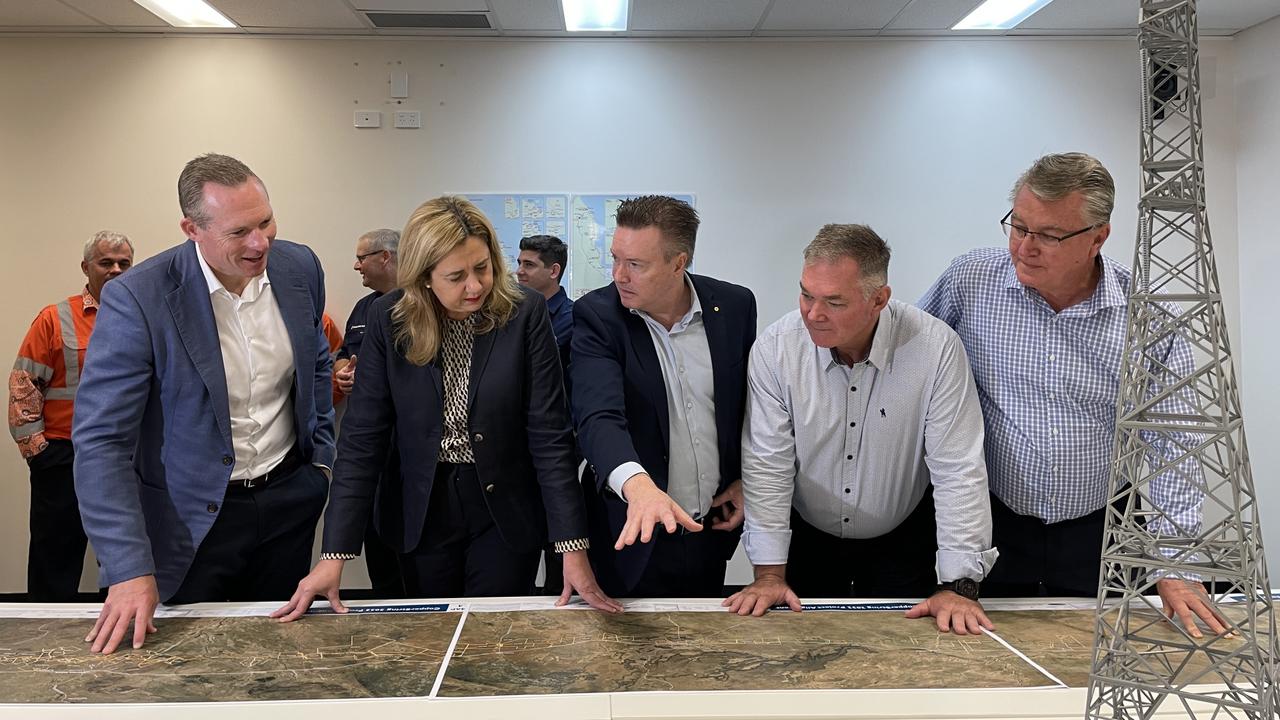
Renewable electricity drawn from the transmission network would power the project with no requirement for renewable generation to be in the immediate vicinity of the project site.
Queensland Hydro are working closely with Powerlink to ensure the proposed pumped hydro energy storage facility at Pioneer-Burdekin would make best use of the renewable energy generated across Queensland and provide grid stability benefits for the State.
See the response to question 12 for information on the location of renewable energy sources across the state.
Read more about the SuperGrid here.
38. Won‘t cyclones and high winds destroy wind farm blades?
There are no wind turbines or wind farms to be constructed by the project or Queensland Hydro.
The proposed Pioneer Burdekin project is a long duration pumped hydro energy storage scheme.

39. How many long term (more than 10 years) full time permanent positions will be available, and how many will be locally attained?
The investigation phase of the proposed Pioneer-Burdekin project will consider the long-term benefits for the region, including the workforce.
Like all major infrastructure projects, a large workforce (more than 2000) will be required during construction, with a smaller workforce (up to 200) needed longer-term to operate and maintain the facility.
We will be exploring opportunities to provide pathways and incentives to grow our local workforce, and to build training capability in the local region to support all stages of the Project.
This may include partnerships with education providers and scholarships to help students build the skills that will be required to support the renewable energy transition.
40. What impact will the project have on the Pioneer River?
During the investigation phase of the proposed Pioneer-Burdekin project, we will undertake a series of hydrological studies to provide a detailed assessment of the likely impacts of the project on river flows in both the Pioneer and Burdekin catchments.
The studies will consider impacts on environmental flows and water security for downstream water users.
We will work closely with the Department of Regional Development, Manufacturing and Water to ensure sustainable management of water in the respective water plan areas.
We are also commissioning studies into other aspects of river health and function, such as water quality, aquatic ecology, sediment transport and geomorphology.

Each of these studies will document the current conditions and assess the potential impacts the project may have on these conditions.
Where potential adverse impacts are identified, the studies will propose measures to avoid, mitigate or offset these impacts.
If the project proceeds, the lower dam would incorporate outlet valves in the base of the dam wall which would allow water to be released to maintain natural flow patterns.
41. How does Qld Hydro plan to manage the fire threats from dry season given the large number of properties they have already purchased formerly had owners that cared for the land including via cattle grazing to reduce fuel loads, weed control, fire breaks, preparation of water points and firefighting equipment, and membership of local Rural Fire Brigades?
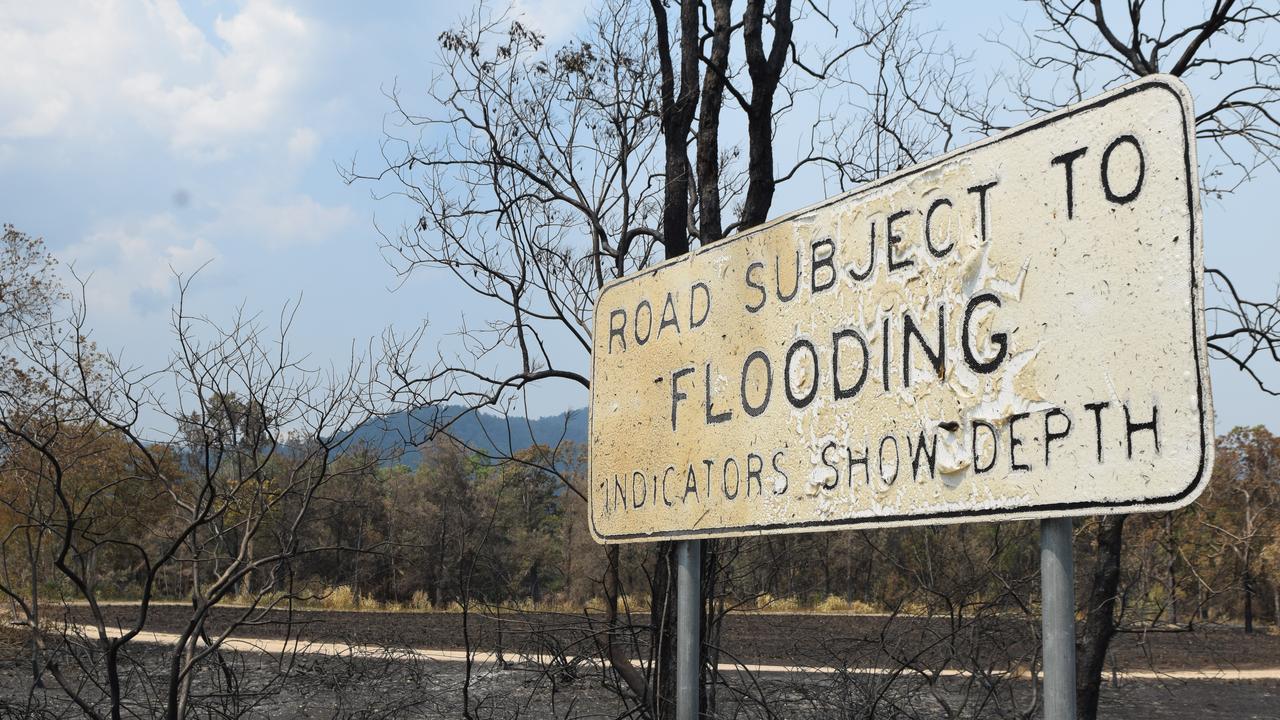
Queensland Hydro’s Land Team is managing any land owned by Queensland Hydro.
They will work with our Environment Team to ensure appropriate measures are in place to manage biosecurity, fire, and other environmental and land management considerations.
42. When (with specific date ranges) will landowners be updated about crucial stages of the project, and how?
Landowners will be contacted directly about significant project milestones and would be provided the opportunity to meet with their dedicated land adviser and technical experts to discuss further, as required.

The most up-to-date information about the stages of the project can be found at any time on the project timeline on the website: Pioneer Burdekin Project Timeline.pdf
We also host regular drop-in sessions in Finch Hatton for the community, and share information about the progress of the project in the project newsletter.
43. Is it true that most of the property owners have already sold their properties, even though they’re still protesting? And how many private properties has Qld Hydro already purchased for its PHES?
In the current investigation phase, we have been working with landowners to understand their individual needs and seek land access for technical investigations.
We recognise however, that the project is causing uncertainty for some landowners who may not be able to wait for a project decision by the Queensland Government.

As of mid-September, a number of landowners have chosen to enter negotiations for their properties to be acquired through voluntary acquisition.
We actively encourage all community members to provide feedback on the project.
There are no agreements or legal documents in place that prevent impacted landowners from commenting on the project or contributing to any community or advocacy groups.
Read more: Netherdale residents plot early moves to oppose $12bn pumped hydro
44. Why was the only Qld Hydro staffer over the last eight months, the ex-interim CEO Chris Evans, who gave honest and transparent answers when prompted, and stepped up and addressed our community, repeatedly, replaced by an ex-Snowy 2.0 Hydro engineer as CEO?
Chris Evans remains integral to the strategic direction of the project and Queensland Hydro in his current role as Executive General Manager, Development.

Kieran Cusack joined Queensland Hydro as CEO from Snowy Hydro where he held several executive roles including Project Director and General Manager of Generation Operations.

His considerable experience across hydropower, pumped hydro, electrical and heavy industrial infrastructure sectors will be instrumental as Queensland Hydro works to secure a clean energy future.
45. What impact will the PHES have on the water table, and the current underground flows of water in the vicinity of the dam?
Geotechnical and hydrogeological studies are currently underway to better understand groundwater dynamics in and around the reservoirs, including water table depth (noting that this will vary seasonally).
Queensland Hydro will be setting up a groundwater monitoring network around the proposed upper and lower reservoirs.
This network will provide data on existing groundwater conditions, which will inform the technical studies and design for the project.
Should the project proceed to an environmental-impact statement (EIS), this data will be used to develop a computer-based model of the local and regional groundwater systems.
Filling of the reservoir for any dam would typically result in an overall increase in the surrounding groundwater levels.
However, there may also be localised areas where groundwater levels could decrease.
The studies described above would allow us to understand if these effects would occur, and how significant they are likely to be.
46. Will local farmers still have their annual water allocation (that they pay for)?
If the proposed Pioneer-Burdekin project proceeds, local farmers would continue to have access to their annual water allocation as per the Pioneer Valley Water Plan, and subject to the conditions of any agreements that they may have in place with a water supply scheme operator.
The proposed project would operate in accordance with the requirements of the Pioneer Valley Water Plan, meaning that water would need to be released for the purposes of maintaining environmental flows, and maintaining water security for downstream water users.
47. What will happen to the household water supply of local people who currently rely on bore water?
Queensland Hydro will be conducting a bore census to document the existing condition of groundwater bores in the local area.
This study will gather information for individual bores, including usage of the bore by the landholder, productivity of the bore, and the quality of the water produced.
This will provide a baseline against which any potential impacts of the project can be assessed.
Queensland Hydro’s Land Team will be in touch with any landowners whose existing bores are within the area of interest for this study.
Filling of the reservoir for any dam would typically result in an overall increase in the surrounding groundwater levels.
Should the project result in interruptions to, or loss of, groundwater supply however, Queensland Hydro would be responsible for ensuring that an alternative water supply of equal or better quality and reliability was provided.
See response to question 45 for more information on groundwater.
48. How long will it take to pay for the PHES (excluding subsidies, grants, rebates, and taxpayers‘ money)?
This information is currently not available.
The commercial operating model for the hydropower station will be considered as part of the detailed analytical report to be submitted to the Queensland Government and will inform any final investment decision on the proposed project.
Like any government-owned commercial enterprise, the final capital structure and revenue model for Queensland Hydro will be determined by the Queensland Government (as shareholder).
49. When will energy produced from the PHES lower Queenslanders power bills?
The proposed Pioneer-Burdekin and Borumba pumped hydro projects are central to the Queensland Energy and JobsPlan (QEJP) announced on 28 September 2022.
The plan aims to put downward pressure on wholesale electricity prices in the longer-term, with more investment into cheap renewable energy and storage.
Independent modelling indicates that under the QEJP, lower wholesale electricity prices will flow through to lower retail bills than without the QEJP, with an average annual bill in 2032 for a household projected to be $150 lower and $1,495 lower for a small business.
50. Will there be public access or tourism activities permitted on the dams?
There is potential for future public spaces, including lookouts and bird viewing areas around the reservoirs, to be included in the detailed design if the project proceeds.
Queensland Hydro will work with key stakeholders, including Mackay Regional Council and the local community to guide the inclusion of local benefits such as tourism.
Water based activities are not considered possible due to the speed of water level changes within the reservoirs when the hydropower system is in operation.


